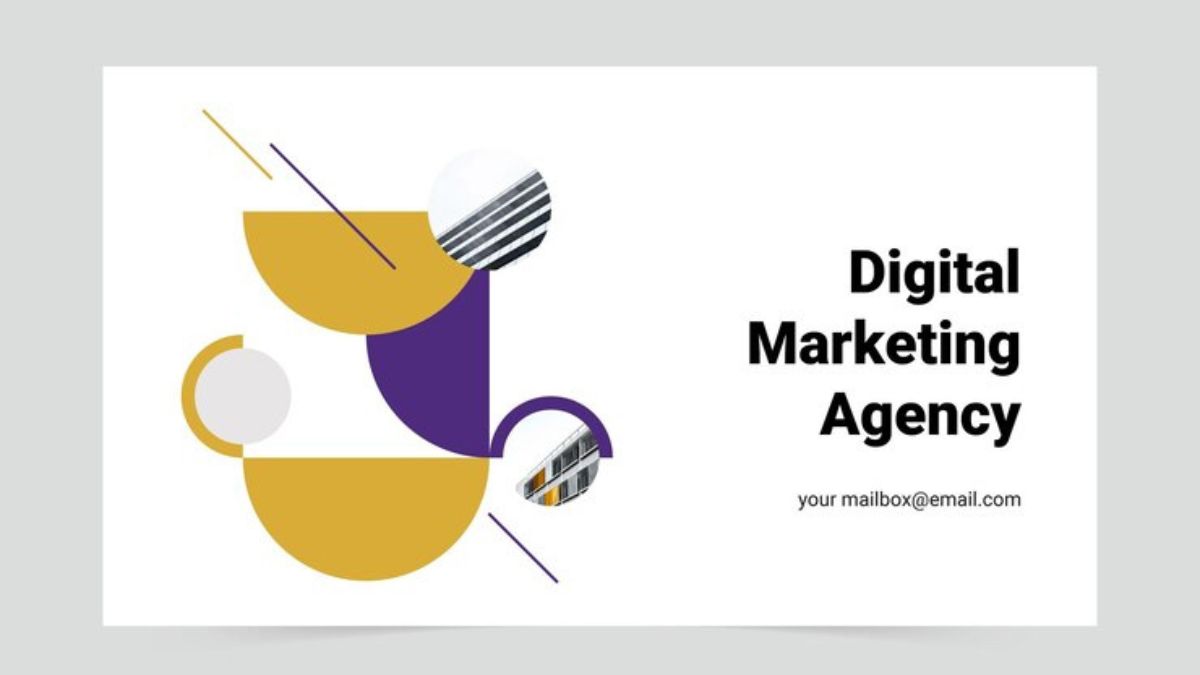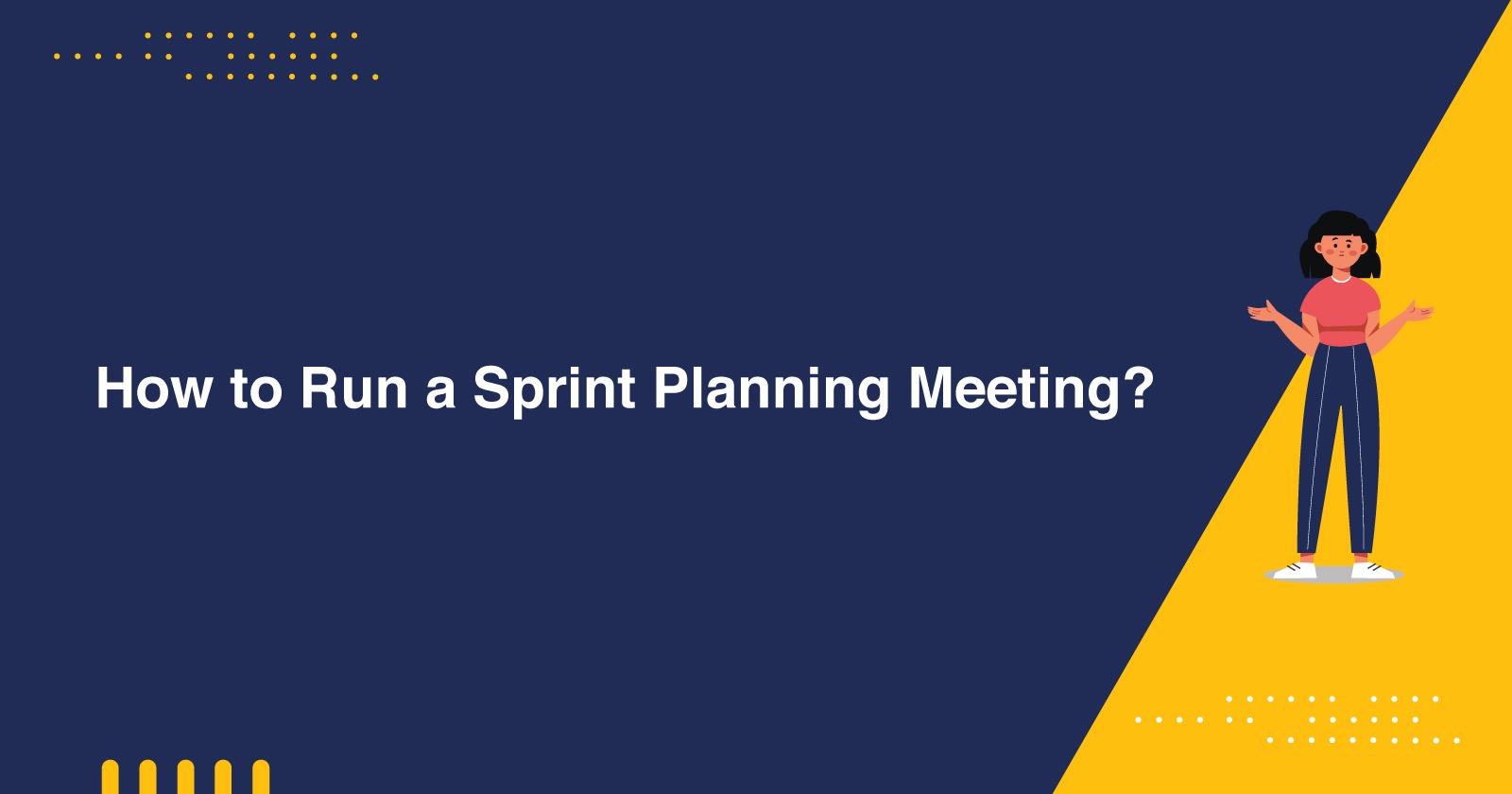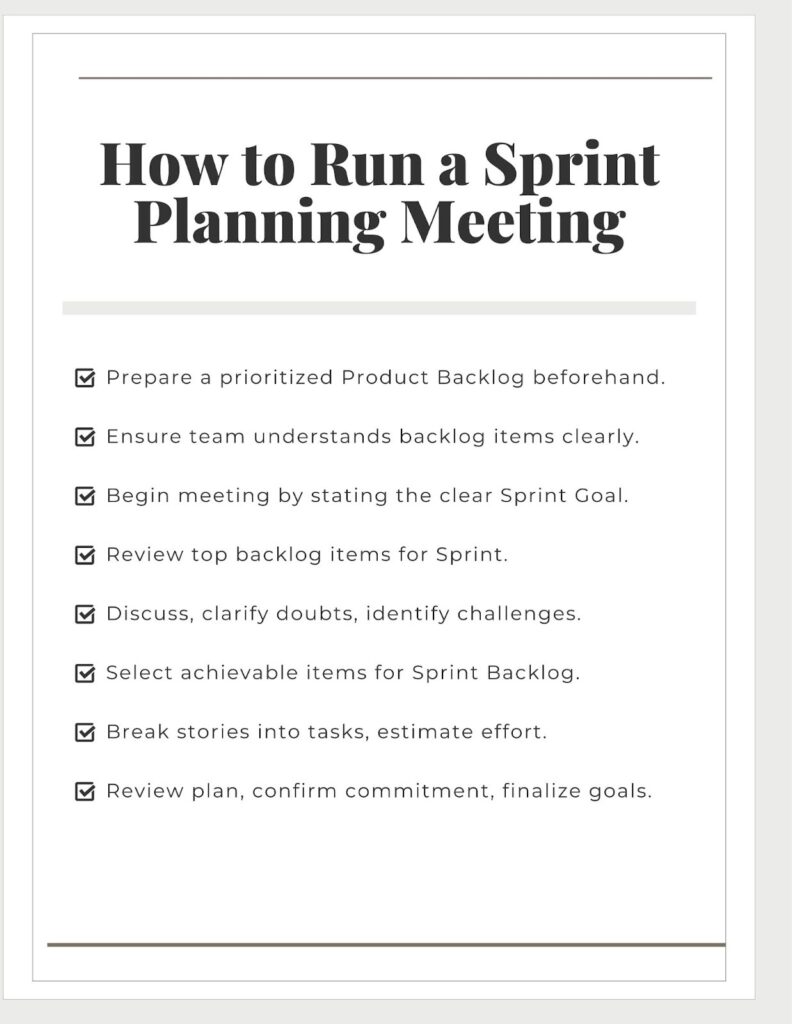BUSINESS
OS Expdoa Amarchtype: Discovering Modern Marketing and Design

OS Expdoa Amarchtype, in the fast-paced world of marketing and design, staying ahead of the curve is crucial. That’s where the concept of OS Expdoa Amarchtype comes in. But what exactly is it, and why should you care? Whether you’re a marketing professional, a design enthusiast, or a small business owner, understanding OS Expdoa Amarchtype can elevate your strategies and make your brand stand out. In this post, we’ll explore what OS Expdoa Amarchtype means, its impact on marketing and design, and how you can apply it effectively to your business endeavors.
What is OS Expdoa Amarchtype?
The term “OS Expdoa Amarchtype” might sound complex, but it’s simply a framework that combines operating systems (OS) with design principles (Expdoa) and archetypes (Amarchtype). This innovative concept guides the creation of cohesive and compelling brand narratives. By integrating these three elements, marketers and designers can craft experiences that resonate deeply with audiences.
OS Expdoa Amarchtype is significant because it links technology with human psychology. It helps brands align their digital and physical touchpoints, creating seamless interactions that enhance user engagement. In a world where consumers expect personalization and authenticity, this concept offers a strategic advantage.
For those in marketing and design, OS Expdoa Amarchtype is a tool that allows for the development of unique, memorable brand identities. It’s about understanding the core values of a brand and expressing them through consistent, meaningful experiences.
The Role of Amarchtype in Marketing
The influence of Amarchtype in marketing cannot be overstated. It plays a vital role in shaping brand perception, user experience, and consumer engagement. By tapping into universal themes and emotional triggers, Amarchtype helps brands connect with consumers on a deeper level.
In marketing, Amarchtype guides the messaging and tone of a brand. It ensures that every communication resonates with the target audience, fostering loyalty and trust. Whether it’s the hero’s journey, the innovator’s spark, or the caregiver’s warmth, Amarchtype aligns brand stories with audience aspirations.
User experience (UX) is another area where Amarchtype shines. By understanding the underlying motivations of consumers, brands can design interactions that are intuitive and satisfying. This not only improves customer satisfaction but also drives conversions and retention.
Consumer engagement is the ultimate goal of any marketing strategy, and Amarchtype provides the blueprint for achieving it. By creating content and campaigns that reflect the desires and fears of the audience, brands can foster meaningful connections and inspire action.
Amarchtype in Design
Design is where the magic of Amarchtype truly comes to life. It influences the creation of visually appealing and effective design elements that capture attention and convey meaning. For designers, understanding Amarchtype is essential for crafting aesthetics that resonate with audiences.
Color, typography, and imagery—all are integral components of Amarchtype in design. By aligning these elements with the brand’s identity and message, designers create cohesive visuals that tell compelling stories. This alignment ensures that every touchpoint reinforces the brand’s values and connects with consumers.
The role of Amarchtype extends beyond aesthetics to functionality. It guides the design of user interfaces and experiences, shaping how users interact with products and services. By prioritizing usability and accessibility, designers ensure that their creations are not only beautiful but also functional.
Effective design requires collaboration between marketers and designers, and Amarchtype serves as the common language that bridges these disciplines. By aligning on a shared vision and goals, teams can create powerful experiences that engage and delight consumers.
Importance for Small Businesses
For small businesses, standing out in a competitive market is often a challenge. This is where leveraging Amarchtype can make a significant difference. By adopting this framework, small businesses can differentiate themselves and build strong, recognizable brand identities.
Amarchtype provides small businesses with the tools to craft authentic stories that resonate with their target audiences. By understanding their unique value propositions and aligning them with universal themes, small businesses can create memorable experiences that attract and retain customers.
One of the key benefits of Amarchtype for small businesses is its ability to foster emotional connections. In a crowded marketplace, consumers are more likely to choose brands that they feel a personal affinity with. Amarchtype helps small businesses build these connections by expressing their values and missions in relatable ways.
Additionally, Amarchtype empowers small businesses to maximize their resources. By focusing on the most impactful elements of their brand narratives, small businesses can achieve significant results without the need for extensive budgets or resources.
Tips for Integrating Amarchtype
For marketing professionals and design enthusiasts, integrating Amarchtype into strategies and projects can seem daunting. However, with some practical advice, anyone can successfully apply this powerful framework.
First, conduct a brand audit to understand your current positioning and identify areas for improvement. This will help you align your brand with the appropriate Amarchtype, ensuring consistency and coherence across all touchpoints. Involve key stakeholders in this process to gain diverse perspectives and insights.
Next, develop a clear brand narrative that reflects your chosen Amarchtype. This narrative should be woven into every aspect of your marketing and design efforts, from messaging and content to visuals and interactions. Use storytelling techniques to create engaging and memorable experiences.
Finally, test and iterate your approach based on feedback and performance metrics. Amarchtype is a dynamic framework, and it’s essential to adapt and refine your strategies over time. By staying responsive to changing consumer preferences and market trends, you can maintain relevance and impact.
Real-World Case Studies
To illustrate the power of Amarchtype, let’s explore some real-world examples of successful implementation in marketing and design.
Consider the case of a well-known tech company that leveraged the Innovator Amarchtype to reposition its brand. By emphasizing its commitment to cutting-edge technology and creative solutions, the company was able to attract a new generation of tech-savvy consumers and increase its market share.
Another example is a boutique fashion brand that adopted the Caregiver Amarchtype to build strong emotional connections with its audience. By focusing on comfort, sustainability, and community, the brand differentiated itself in a crowded market and achieved significant growth.
These case studies demonstrate the versatility and effectiveness of Amarchtype in various industries and contexts. By aligning brand narratives with the right archetypes, businesses can create compelling experiences that drive engagement and loyalty.
The Future of Amarchtype
The landscape of Amarchtype is continually evolving, and its potential impact on businesses is significant. As technology advances and consumer expectations shift, Amarchtype offers a flexible framework for navigating these changes and staying ahead.
One of the key trends shaping the future of Amarchtype is the integration of artificial intelligence and data analytics. These technologies allow for more precise and personalized brand experiences, aligning closely with consumer needs and desires. By leveraging AI and data, businesses can enhance their Amarchtype strategies and improve their effectiveness.
Another trend is the growing importance of social and environmental responsibility in brand narratives. Consumers increasingly seek brands that align with their values and contribute positively to society. Amarchtype provides a platform for expressing these commitments and engaging ethically-minded consumers.
Finally, as the lines between digital and physical experiences continue to blur, Amarchtype will play a crucial role in creating seamless and cohesive interactions. By prioritizing user experience and accessibility, businesses can deliver consistent value across all channels and touchpoints.
Discover the Potential of OS Expdoa Amarchtype
In conclusion, OS Expdoa Amarchtype is a powerful framework for modern marketing and design. By understanding its principles and applications, businesses of all sizes can create authentic, engaging experiences that resonate with their audiences.
For marketing professionals, design enthusiasts, and small business owners, exploring Amarchtype offers a unique opportunity to differentiate and thrive in a competitive landscape. By integrating this approach into your strategies and projects, you can unlock new levels of creativity, impact, and success.
Ready to take the next step? Explore resources, workshops, and tools to deepen your understanding of OS Expdoa Amarchtype and start applying it to your endeavors today.
Conclusion
The OS Expdoa Amarchtype framework has established itself as an indispensable tool for brands seeking to make a lasting impression in today’s dynamic market. This innovative approach to brand storytelling empowers businesses to articulate their core values and connect emotionally with their audience, fostering loyalty and engagement. By seamlessly integrating the Amarchtype into marketing and design strategies, organizations can stay relevant amidst rapid technological advancements and shifting consumer expectations. Embracing this model not only promotes creativity and innovation but also ensures that brands stay socially and environmentally responsible. As the digital landscape continues to evolve, the OS Expdoa Amarchtype offers an unparalleled opportunity to unlock new possibilities and navigate the future with confidence.
FAQs
What is the OS Expdoa Amarchtype?
The OS Expdoa Amarchtype is a modern framework used in marketing and design to enhance brand storytelling. It helps businesses articulate core values, connect with audiences emotionally, and adapt to evolving market trends.
How can my business benefit from using OS Expdoa Amarchtype?
By integratingOS Expdoa Amarchtype into your strategies, you can create more authentic and engaging brand experiences, differentiate your business in a competitive market, and foster customer loyalty through meaningful connections.
Is OS Expdoa Amarchtype suitable for all industries?
Yes, OS Expdoa Amarchtype is a versatile framework that can be adapted to various industries. Its principles are applicable to any business that seeks to strengthen its brand narrative and engage consumers effectively.
How do I start integrating Amarchtype into my brand?
Begin by conducting a brand audit to identify your current positioning and align your brand with the appropriate Amarchtype. Develop a clear narrative and continually test and iterate your strategies based on consumer feedback.
Can small businesses use Amarchtype effectively?
Absolutely. Amarchtype is scalable and can be tailored to the needs of small businesses. By leveraging its principles, you can create compelling and memorable customer interactions, regardless of size or budget.
BUSINESS
How to Run a Sprint Planning Meeting?

A meeting is a structured conversation between team members with a clear goal in mind. In Agile and Scrum, meetings are inevitable because they create regular opportunities for the team to inspect their work, adapt the discussed plan, and align it with the organization’s goals.
This constant communication and collaboration are an essential part of responding to change and meeting the value delivery. In this article, we discuss how to run a Sprint planning meeting and how it contributes to the Scrum team’s effectiveness.
What is Sprint Planning?
Sprint is a container for all Scrum events (Sprint Planning, Daily Scrums, Sprint Review, and Sprint Retrospective). That means Sprint Planning is also part of the Sprint. Everybody in the team works towards the Sprint Goal.
Sprint Planning is a team meeting at the beginning of every Sprint to answer three basic questions:
- What can we deliver in this Sprint?
- How will we get the work done?
- Who will do that?
Sprint Planning meeting does not have to be boring and a waste of time. If you conduct it correctly, it can be the most stimulating time in your race. The purpose of this meeting is to leave each team member with an idea of the things they will accomplish.
How Can You Do This Efficiently?
Let’s break it into simple steps.
Step 1: Preparation
A great start leads to great results.
The PO’s Job: The Product Owner (PO) is the key player and initiator of this meeting. They must come with a prepared Product Backlog. The most important items at the top should be clear, detailed, and prioritized. It is like a menu of the team for the Sprint.
The Team’s Job: So, PO is involved in preparing this list. The team’s crucial job is to be already familiar with that backlog from previous refinement sessions.
Step 2: Set the Stage (First 15 Minutes)
Everyone is getting ready. Begin with the review goal.
Review the Goal: The Product Owner is the responsible person for kicking off the presentation of the Sprint goal. This is a short, clear statement of what the team aims to achieve by the end of the Sprint. For example, “Allow users to reset their password securely without needing to contact customer support.” This provides the team with a shared purpose, not just a list of tasks.
Review the Backlog: The PO then takes the team through the high-priority items from the backlog that could help achieve that goal.
Step 3: Choose the work (The “What”)
The team can set a realistic commitment to delivering.
Discuss and Ask Questions: The team reviews each potential backlog item. Developers and Testers may ask these questions:
- “What does ‘done’ look like for this?”
- “Are there any hidden challenges?”
Select the items: Collectively, the team decides how many of these top items they can realistically finish in the Sprint. This is a team decision, not a command from the PO or Scrum Master. The selected items move from the Product Backlog to the Sprint Backlog.
Step 4: Divide and Allocate it (The “How”)
Put plans into action. For each backlog item selected, the team needs to create a game plan.
Create a Task List: Breakdown each backlog item (usually a “User Story”) into small, specific, and actionable tasks. Let’s consider an example: the “password reset” story task list will contain:
- Create UI mockups for reset flow,
- Develop a backend API for password validation,
- Implement email notification service,
- Write integration tests for the complete workflow.
Estimate Effort: Most of the teams find this useful to calculate the time or complexity of these tasks. Make sure the workload is realistic and well-distributed among team members.
Step 5: Finalize The Plan
Before finishing, do you do a quick check?
Review the Plan: Take a final look at the Sprint Backlog.
- Does everyone understand the tasks?
- Does the plan look achievable?
Confirm Commitment: The scrum master responsible is getting the final confirmation from each team member that orally agrees to the Sprint Goal and the established plan. The powerful question Does everyone feel confident in our plan?” brings true team engagement.

Some Useful Tips For Success:
Follow these valuable, simple tips to become successful:
- Time-box it: A two-week Sprint usually requires a maximum of a two-hour planning meeting. Engage it focused.
- Invest in the Right Skills: Gain the required skills through the CSM certification course, which brings you a deep understanding of the Scrum practices and essential skills to run successful Sprint planning meetings.
- Ensure Everyone’s Participation: Not only for POs and Scrum Masters. This is for all team members. Encourage them to participate and make them involved in discussions.
- Deploy a Scrum Master to Facilitate: The Scrum Master should facilitate the entire meeting to avoid conflict in the discussions. Ensure the meeting is on track, remove roadblocks, and encourage team members to be cross-functional.
Final Thoughts:
Teams following an effective Sprint Planning meeting are achieving 80 to 90% of their goal as planned. Teams that have “successful” meetings are much more likely to complete their work on time and feel proud about what they have built. It sets an example for everyone to follow for a smooth and successful Sprint.
BUSINESS
ExcellenceGet.net/: Empowering Businesses to Excel

Success in today’s competitive business world requires more than just determination—it demands excellence. That’s where ExcellenceGet.net/ comes in. Designed for startups, digital marketers, and entrepreneurs, the platform delivers expert insights on business excellence, leadership strategies, and management solutions. Whether you’re looking to master the art of leadership or refine your digital strategies, ExcellenceGet.net/ provides the tools and resources to help your business thrive.
Why Excellence Matters in Business
Excellence isn’t just a buzzword—it’s the foundation upon which thriving businesses are built. It drives innovation, fosters creativity, and creates trust with customers and stakeholders. Committing to excellence early ensures a stronger, more sustainable foundation for startups and entrepreneurs. For digital marketers, prioritizing excellence sharpens campaigns and ensures higher ROI. At every stage, excellence differentiates successful businesses from their competitors.
Key benefits of pursuing business excellence include:
- Improving operational efficiency
- Building a strong, trustworthy brand
- Increasing customer satisfaction
- Driving consistent business growth
Excellence isn’t an option—it’s a necessity.
How ExcellenceGet.net Supports Your Business Growth
ExcellenceGet.net is a one-stop platform specifically designed to help businesses reach their full potential. With its comprehensive library of expert-curated content, the platform empowers you to face challenges, innovate, and grow with confidence.
Features and Tools Offered by ExcellenceGet.net
- Business Excellence Articles
- Leadership Resources
- Case Studies
- Exclusive Community for Entrepreneurs and Marketers
- Keyword Research
Use tools like Google Keyword Planner to identify terms that your target audience is searching for. Focus on long-tail keywords for better targeting.
- Content Optimization
Publish high-quality content that addresses customer pain points. Platforms like ExcellenceGet.net provide valuable insights into how to create impactful content.
- Technical SEO
Ensure your website is mobile-friendly, fast, and free of crawling issues. Tools such as SEMrush can help with diagnostics.
- Backlink Building
Focus on acquiring backlinks from industry leaders and related websites to boost your authority.
ExcellenceGet.net’s resources even include tips on SEO content creation tailored for startups!
Enhancing Digital Marketing Strategies with ExcellenceGet
Digital marketers require tools and insights that enable strategic, creative, and efficient execution. ExcellenceGet.net offers just that—actionable advice and proven tactics to enhance marketing strategies and boost campaign performance.
Ways digital marketers can benefit from ExcellenceGet:
- Learn how to craft high-impact campaigns that align with brand values.
- Discover tools to analyze campaign performance and refine targeting.
- Gain insights into creating share-worthy content tailored to your audience.
- Understand how to use customer feedback for continuous improvement.
With ExcellenceGet.net as your guide, you can elevate your digital marketing efforts and ensure excellence at every stage of a campaign.
The Future of Excellence in Business
The business of tomorrow will look vastly different from what it is today. Excellence will no longer be a differentiator—it will be the standard. Platforms like ExcellenceGet are at the forefront of this change, empowering businesses to adapt, innovate, and excel.
Here’s what the future of business excellence looks like:
- AI-Driven Decision Making
AI and machine learning will play an integral role in helping businesses implement smarter, more efficient strategies.
- Sustainability and Ethics
Companies pursuing excellence will increasingly prioritize ethical practices and sustainability.
- Personalized Leadership Approaches
Businesses will shift toward more personalized approaches in leadership and team management.
ExcellenceGet.net is dedicated to helping you and your business stay ahead in this rapidly evolving landscape.
Achieve Business Excellence with ExcellenceGet.net
Excellence isn’t achieved overnight—it’s the result of deliberate effort, expert guidance, and continual improvement. For startups, digital marketers, and entrepreneurs alike, ExcellenceGet.net offers the resources, tools, and community needed to thrive.
Explore ExcellenceGet.net today and take your business to the next level!
[Visit ExcellenceGet.net/ and Start Your Journey]
Conclusion
In this fast-paced and ever-evolving business landscape, achieving excellence requires a proactive approach, continuous learning, and the right resources. At ExcellenceGet.net/, we are committed to helping you and your business thrive, providing the tools, resources, and a supportive community needed to stay ahead. Embrace AI-driven decision-making, prioritize sustainability and ethics, and adopt personalized leadership approaches to unlock the full potential of your business. Start your journey towards business excellence today and explore everything ExcellenceGet.net/ has to offer. Together, let’s take your business to the next level!
[Visit ExcellenceGet.net and Start Your Journey]
FAQs
Q: What kind of resources does ExcellenceGet.net offer?
A: ExcellenceGet.net offers a wide range of resources to help businesses thrive. From articles and guides on various business topics to templates, frameworks, and tools, we provide comprehensive support to help you navigate the challenges and opportunities of the business world.
Q: Is ExcellenceGet.net/ only for startups?
A: No, ExcellenceGet.net/ is designed to support startups, digital marketers, and entrepreneurs of all levels. Whether you’re just starting or looking to take your established business to new heights, you will find valuable insights, resources, and a supportive community at ExcellenceGet.net/.
Q: How can I stay updated with the latest trends and insights?
A: ExcellenceGet.net/ is committed to keeping you informed and up-to-date. We regularly publish articles, case studies, and research papers on the latest trends, strategies, and best practices in business. Additionally, our community forums provide a platform for discussion and knowledge sharing among industry experts and fellow entrepreneurs.
Q: Can ExcellenceGet.net/ help with personalized leadership approaches?
A: Absolutely! At ExcellenceGet.net/, we understand the importance of leadership in driving business success. We offer resources and guidance on developing personalized leadership styles that align with your values and business goals. We aim to help you unlock your leadership potential and inspire your team to achieve excellence.
Q: How can I get involved with the ExcellenceGet.net/ community?
A: Joining the ExcellenceGet.net community is easy! Simply create an account on our website to gain access to our resources, forums, and networking opportunities. Engage with fellow entrepreneurs, share your experiences, and learn from others who are on a similar journey to business excellence.
Have more questions? Don’t hesitate to reach out to our support team. We’re here to assist you every step of the way on your path to business excellence.
BUSINESS
How Managed IT Services Enhance Business Information Security

1. Proactive Threat Detection and Response
One of the most significant advantages of managed IT services is the proactive approach to threat detection. MSPs utilize sophisticated monitoring tools and threat intelligence feeds to identify potential vulnerabilities and suspicious activities in real time. This proactive approach allows businesses to address issues before they escalate into full-blown breaches. Key benefits include:
Early Warning Systems: Continuous monitoring helps detect anomalies that may indicate a breach, allowing for rapid intervention.
Automated Alerts: Automated systems notify IT personnel of potential security incidents, reducing the time taken to respond.
Incident Response: Managed IT services often include an incident response team that can quickly isolate affected systems, mitigate damage, and restore operations.
2. Enhanced Data Protection and Backup Solutions
Data is one of the most valuable assets for any business. Managed IT services providers implement robust data protection measures, ensuring that sensitive information is secure both at rest and in transit. These measures include:
Regular Data Backups: Automated backups ensure that critical data is stored securely and can be recovered in the event of a breach or hardware failure.
Encryption: Data encryption is applied to protect information from unauthorized access, both on local systems and during transmission.
Access Controls: Strict access controls limit who can view or modify sensitive data, reducing the risk of internal breaches.
3. Network and Infrastructure Security
Managed IT services focus on securing your entire IT infrastructure, from your internal network to cloud environments. This comprehensive approach includes:
Firewall Management: Regular updates and configuration of firewalls to block unauthorized access.
VPNs (Virtual Private Networks): Secure remote access solutions ensure that employees can work from anywhere without compromising security.
Patch Management: Timely updates and patches to software and operating systems close security loopholes that could be exploited by attackers.
4. Compliance and Regulatory Support
Maintaining compliance with industry regulations is critical for avoiding fines and protecting your reputation. MSPs have specialized knowledge of various compliance requirements and can help ensure that your business meets all necessary standards. Services provided include:
Security Audits: Regular audits and assessments to identify and rectify compliance gaps.
Documentation: Comprehensive documentation of security policies, procedures, and incident responses, which is crucial for regulatory reporting.
Consultation: Expert advice on implementing and maintaining security measures that comply with industry standards.
5. Continuous Improvement and Innovation
Cybersecurity is not a one-time effort but a continuous process. Managed IT services providers invest in research and development to stay ahead of emerging threats and technologies. Their commitment to continuous improvement means that your business benefits from:
Latest Security Technologies: Access to the most current security tools and solutions without having to invest in them directly.
Ongoing Training: Regular training for IT staff on new threats and best practices, ensuring that your team is always prepared.
Adaptability: The ability to quickly adjust security protocols in response to new vulnerabilities and regulatory changes.
Practical Strategies for Securing Your Business Information
Implementing managed IT services is a significant step toward securing your business, but there are additional strategies you can adopt to bolster your security posture. Below are several best practices to consider:
1. Develop a Comprehensive Security Policy
A robust security policy is the foundation of any effective cybersecurity strategy. Your policy should outline:
Access Controls: Define who has access to what data and under what circumstances.
Password Management: Enforce strong, unique passwords and consider multi-factor authentication (MFA) for all sensitive systems.
Incident Response Plan: Create a detailed plan for responding to security breaches, including roles, responsibilities, and communication protocols.
Regular Training: Ensure that all employees understand the importance of cybersecurity and are trained to recognize potential threats, such as phishing emails.
2. Implement Multi-Factor Authentication (MFA)
Password breaches are among the most common security issues. Multi-factor authentication adds an extra layer of security by requiring users to provide two or more forms of verification before accessing sensitive information. This might include:
Something you know: A password or PIN.
Something you have: A smartphone or hardware token.
Something you are: Biometric verification such as fingerprint or facial recognition.
3. Regularly Update and Patch Systems
Keeping your software and systems up to date is critical for closing security gaps. Cybercriminals often exploit known vulnerabilities in outdated software. Managed IT services providers offer automated patch management to ensure that your systems are always current.
Automated Patching: Regular, automated updates help ensure that vulnerabilities are addressed promptly.
Testing Patches: Implement a testing protocol to ensure that updates do not interfere with business operations before full deployment.
4. Use Encryption for Data Protection
Encryption converts data into a coded format that can only be deciphered by authorized users with the correct decryption key. This is particularly important for sensitive data such as financial records, customer information, and intellectual property. Ensure that:
Data at Rest: All stored data is encrypted, whether on local servers or in the cloud.
Data in Transit: Use secure protocols (e.g., HTTPS, SSL/TLS) to protect data as it moves across networks.
5. Monitor and Analyze Network Traffic
Continuous monitoring of network traffic is essential for identifying unusual activities that may indicate a security breach. Employing tools like Security Information and Event Management (SIEM) systems can help:
Detect Anomalies: Identify patterns that deviate from normal behavior.
Alert in Real Time: Provide immediate notifications of potential threats.
Automate Responses: Implement automated actions to contain breaches, such as blocking suspicious IP addresses.
6. Secure Your Mobile and Remote Workforces
With the rise of remote work, ensuring that mobile devices and remote connections are secure has become increasingly important. Managed IT services offer solutions that include:
Virtual Private Networks (VPNs): Secure remote connections to your corporate network.
Mobile Device Management (MDM): Tools to monitor and manage mobile devices, ensuring they comply with security policies.
Remote Monitoring: Continuous oversight of remote devices to detect and respond to threats.
7. Conduct Regular Security Audits and Penetration Testing
Regular audits and penetration tests are crucial for identifying weaknesses in your security systems before attackers do. Managed IT services providers can:
Perform Vulnerability Assessments: Identify and prioritize vulnerabilities.
Simulate Attacks: Conduct controlled penetration tests to evaluate the effectiveness of your defenses.
Provide Recommendations: Offer actionable insights to improve your overall security posture.
8. Educate and Train Employees
Even the most robust security systems can be undermined by human error. Regular cybersecurity training helps employees recognize threats such as phishing attempts, social engineering scams, and unsafe browsing habits. Consider:
Security Awareness Programs: Regular sessions to educate staff on current threats and best practices.
Simulated Attacks: Phishing simulations and other exercises to test and improve employee responses to security threats.
Ongoing Communication: Regular updates and reminders about security policies and procedures.
The Role of Managed IT Services in Disaster Recovery
1. Importance of a Disaster Recovery Plan
A comprehensive disaster recovery plan is essential for ensuring that your business can quickly resume operations after a cybersecurity incident. Managed IT services can help by providing:
Regular Backups: Automated backups of critical data to secure offsite locations or the cloud.
Rapid Recovery: Tools and expertise to restore systems and data quickly, minimizing downtime.
Testing and Drills: Regular testing of disaster recovery protocols to ensure they are effective in real-world scenarios.
2. Benefits of Managed Disaster Recovery
By integrating disaster recovery into your managed IT services, you can enjoy several advantages:
Minimized Downtime: Rapid restoration of systems means less disruption to business operations.
Cost Savings: Avoid the high costs associated with prolonged downtime and data loss.
Business Continuity: Ensure that critical operations can continue, even in the face of significant disruptions.
Compliance Assurance: Meet regulatory requirements for data protection and business continuity planning.
Real-World Examples: Success Stories with Managed IT Services
1. A Small Business Success Story
Consider a small retail business that struggled with frequent ransomware attacks. With limited internal IT resources, the company found it challenging to maintain robust security protocols. After partnering with a managed IT services provider, the business implemented:
24/7 Network Monitoring: Continuous oversight allowed the detection of suspicious activity before ransomware could be fully deployed.
Regular Data Backups: Automated backups ensured that the business could quickly recover its data without paying a ransom.
Employee Training: Regular security training reduced the likelihood of phishing and social engineering attacks.
As a result, the business experienced fewer security incidents, reduced downtime, and increased customer trust—all while keeping IT costs under control.
2. A Corporate Enterprise Transformation
A large enterprise with a global footprint faced the challenge of securing a vast and diverse IT environment. The company needed a unified approach to cybersecurity that could scale across multiple locations and comply with various international regulations. By implementing managed IT services, the enterprise achieved:
Centralized Security Management: A single point of control for monitoring and managing security across all offices and remote sites.
Advanced Threat Intelligence: Integration of global threat intelligence feeds allowed the company to stay ahead of emerging cyber threats.
Compliance Management: Regular audits and compliance checks ensured adherence to both domestic and international data protection regulations.
The transformation resulted in a significantly enhanced security posture, reduced risk of data breaches, and the ability to confidently expand into new markets.
How to Choose the Right Managed IT Services Provider
When considering managed IT services for your business, it is essential to choose a provider that aligns with your specific needs and goals. Here are some key factors to consider:
1. Expertise and Experience
Look for a provider with a proven track record in cybersecurity and managed IT services. Consider:
Industry Experience: Providers who have worked with businesses similar to yours.
Certifications and Partnerships: Look for certifications (such as ISO 27001) and partnerships with leading technology vendors.
Client Testimonials: Reviews and case studies that demonstrate successful implementations.
2. Range of Services
Ensure that the provider offers a comprehensive suite of services that covers all aspects of cybersecurity, including network security, endpoint protection, data backup, cloud security, and compliance management. A one-stop solution can simplify management and improve overall security.
3. Scalability and Flexibility
Your business will likely evolve over time, and your IT needs may change. Choose a provider that offers scalable solutions and can adapt to your growing requirements. Flexibility is key to ensuring long-term alignment with your business strategy.
4. Response Times and Support
In the event of a security incident, rapid response is critical. Evaluate the provider’s support structure, including:
24/7 Monitoring and Response: Ensure that the provider offers round-the-clock monitoring and rapid incident response.
Service Level Agreements (SLAs): Review the SLAs to understand response times and escalation procedures.
Proactive Communication: Regular reporting and updates on security status are crucial for maintaining transparency.
5. Cost and ROI
While security is paramount, cost considerations cannot be ignored. Look for a provider that offers a clear pricing structure with a strong return on investment (ROI). Compare costs with the potential financial impact of a security breach to understand the value provided.
For more insights into our service offerings and how we can tailor our solutions to meet your unique needs, visit our Managed IT Services page.
Future Trends in Managed IT and Cybersecurity
As technology continues to advance, so too do the methods employed by cybercriminals. Staying ahead of the curve is essential for maintaining a secure environment. Here are some future trends that businesses should be aware of:
1. Increased Adoption of Artificial Intelligence (AI)
AI is transforming cybersecurity by enabling predictive analytics and automating threat detection. Managed IT services providers are increasingly leveraging AI and machine learning to:
Detect Patterns: Identify unusual patterns and potential threats in real time.
Automate Responses: Use automated systems to neutralize threats as soon as they are detected.
Enhance Predictive Capabilities: Forecast potential vulnerabilities based on historical data and trends.
2. Expansion of the Internet of Things (IoT)
The proliferation of IoT devices introduces new vulnerabilities into the network. As businesses adopt more connected devices, managed IT services will need to focus on:
IoT Security: Implementing specialized security measures to protect connected devices from exploitation.
Integrated Management: Consolidating IoT device management with overall network security protocols to provide unified protection.
3. The Growing Importance of Zero Trust Architecture
The Zero Trust model assumes that threats can exist both inside and outside the network, and therefore, every access request must be thoroughly verified. Future managed IT services will increasingly adopt Zero Trust principles, ensuring that:
No Implicit Trust: Every user and device is continuously authenticated and validated.
Enhanced Monitoring: Constant verification of access requests, regardless of origin, reduces the risk of unauthorized access.
4. Cloud Security Maturity
As businesses shift more operations to the cloud, the focus on cloud security will intensify. Managed IT services providers are likely to expand their cloud security offerings to include:
Cloud Access Security Brokers (CASBs): Tools that provide visibility and control over cloud services.
Enhanced Data Protection: Improved encryption and identity management for cloud-based applications.
Compliance Management: Tools to ensure that cloud environments meet evolving regulatory requirements.
Conclusion
Securing your business information is no longer optional—it’s a necessity. Cyber threats are evolving, and traditional IT management approaches are increasingly insufficient to protect against sophisticated attacks. Managed IT services offer a proactive, comprehensive, and cost-effective solution to safeguard your digital assets, ensuring business continuity and regulatory compliance.
By partnering with an experienced managed IT services provider, you gain access to a wealth of expertise, advanced monitoring tools, and robust security measures designed to protect your business from emerging threats. From network security and data backup to compliance management and disaster recovery, managed IT services provide the full spectrum of solutions needed to maintain a secure environment.
For more details on how our services can protect your business and help you stay ahead of cyber threats, please visit our Managed IT Services page.
Implementing managed IT services is not just about defending against cyber-attacks; it’s about empowering your business to thrive in a secure digital landscape. Embrace a proactive approach to cybersecurity and ensure that your business information remains safe, your operations uninterrupted, and your reputation intact.
This comprehensive guide has explored the critical aspects of securing your business information with managed IT services. By understanding the threat landscape, implementing robust security measures, and partnering with a trusted managed IT services provider, you can build a resilient cybersecurity strategy that protects your assets, meets regulatory requirements, and supports your long-term growth.
Investing in managed IT services is an investment in the future of your business—a future where security and innovation go hand in hand. Stay proactive, stay secure, and let managed IT services lead the way.
Disclaimer: The information provided in this article is intended for educational purposes only and should not be considered legal or financial advice. Always consult with a professional before making decisions related to cybersecurity and IT management.
By following the strategies and best practices outlined in this article, your business can effectively mitigate risks, respond swiftly to incidents, and maintain a secure operational environment. The ever-changing cybersecurity landscape demands that you remain vigilant, adapt to new challenges, and continuously improve your defenses. Managed IT services are an invaluable partner in this journey—offering expertise, advanced tools, and a proactive approach to protecting what matters most.
For further assistance or to learn more about our comprehensive solutions, don’t hesitate to explore our dedicated Managed IT Services page. Let us help you create a secure, resilient, and thriving digital future for your business.
-

 TECHNOLOGY1 year ago
TECHNOLOGY1 year agoM6 auc 4s0101 Chip: Revolutionizing Automotive Electronics
-

 NOODLEMAGAZINE1 year ago
NOODLEMAGAZINE1 year agoNoodleMagazine: Bridging Cultures
-

 ENTERTAINMENT1 year ago
ENTERTAINMENT1 year agoNoodleMagazine: Stirring Up Culinary Creativity
-

 HEALTH & FITNESS1 year ago
HEALTH & FITNESS1 year agoHow NoodleMagazine is Shaping Modern Asian Cuisine Trends
-

 ENTERTAINMENT1 year ago
ENTERTAINMENT1 year agoWhat is NoodleMagazine?
-

 NEWS1 year ago
NEWS1 year agoIs Noodlemagazine A Safe Website?
-

 BUSINESS1 year ago
BUSINESS1 year agoAjay Attaho: Revolutionizing Freelancing, Tech, and Startups
-

 BUSINESS11 months ago
BUSINESS11 months agoHow Managed IT Services Enhance Business Information Security




































